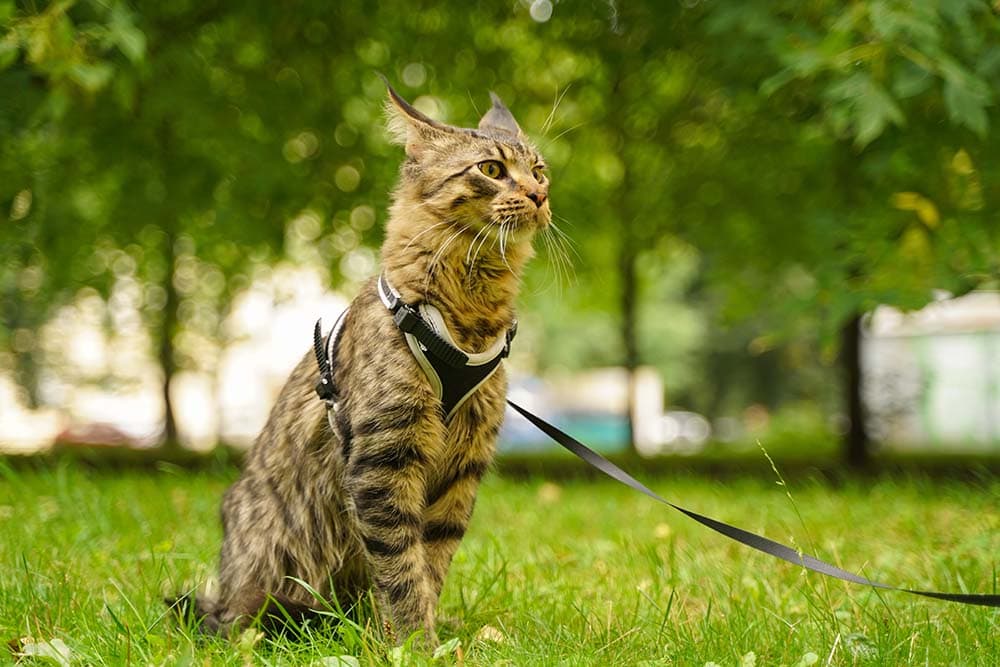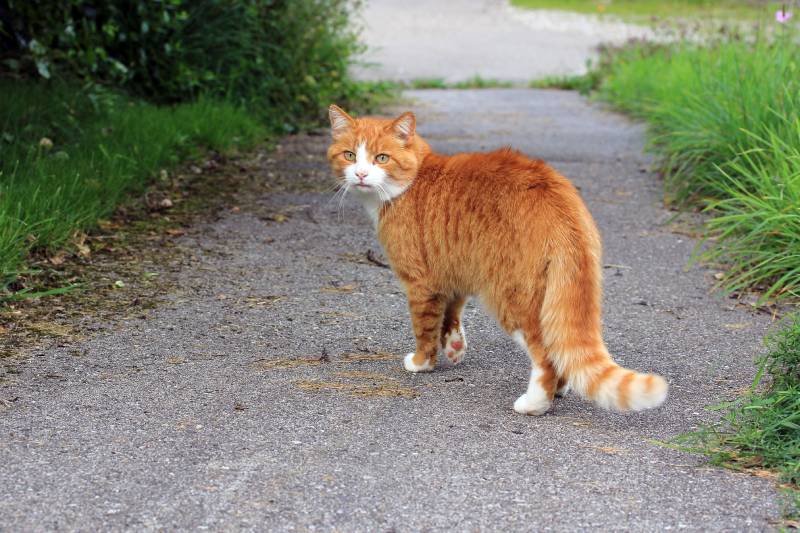Do Cats Like Eye Contact? Vet Reviewed facts & FAQ
By Luxifa Le
Updated on
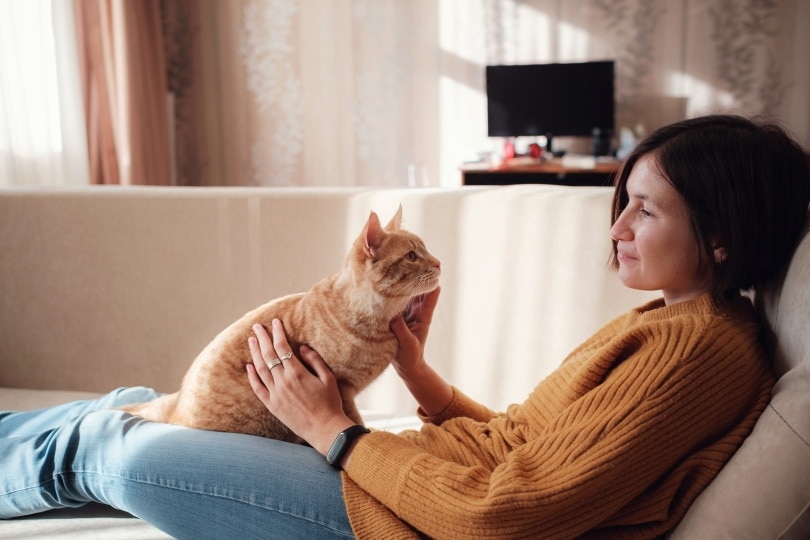
Most people have observed a cat staring at them intently, but very few know what it means when a cat does that. Similarly, most cat fanciers have heard the myth that making eye contact with a cat is a sign of aggression, but is that true? Here is what it means when you stare into those hypnotic eyes!
Eye contact between cats and humans can be a bonding experience, but it can also be a sign of aggression. Keep an eye on your cat’s body language to tell the difference!
Eye Contact as a Sign of Aggression
Unfortunately, this isn’t a myth. Eye contact between cats is often a sign of aggression in the moments preceding a territory scuffle.
The good news is that eye contact between cats and humans is not marked by the same signs of aggression as between two cats. Eye contact between a human and a cat does not agitate the cat as much as eye contact between a human and dog would agitate the dog either.
So, it’s safe to say that while eye contact between cats is a sign of aggression, cats do not take your eye contact as a point of contention. Some behavioral studies show that cats make eye contact with humans they like. However, cats are very self-conscious animals that don’t like to be watched. So, they won’t like it if you stare at them for a while, even if you have a generally good relationship.
Whether your cat is making eye contact with you for good or bad reasons can be figured out by assessing their other body language—the primary method cats use to communicate. While human body language is often secondary to vocalization, cats don’t need vocalization to say everything they want to.
Additionally, prolonged eye contact may be associated with lower socialization in cats. That is to say that cats who have less contact with humans are more likely to make intense, prolonged eye contact with humans. It’s believed that this behavior has to do with an increased suspicion of humans in unsocialized cats. They’re more suspicious of humans and are thus more interested in their behaviors and actions as they try to ascertain the threat level.
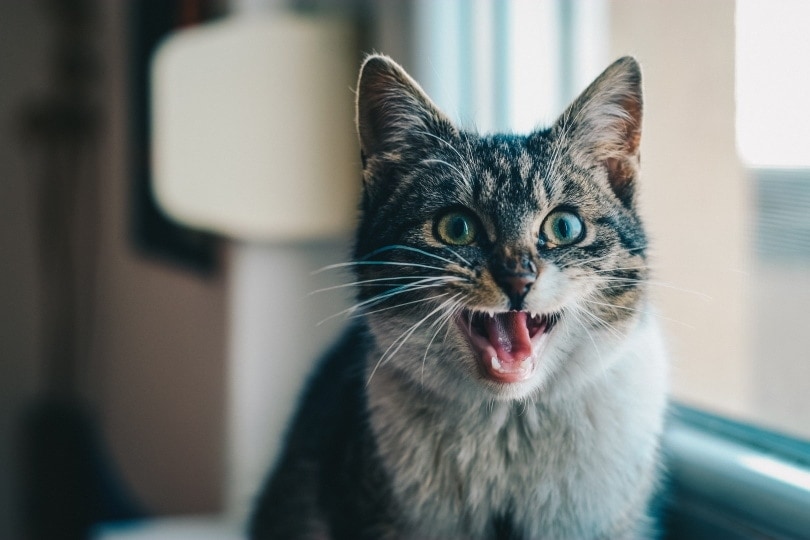
What Is My Cat Feeling? A Guide to Cat Body Language
As we’ve mentioned, cats are generally self-conscious animals who prefer to avoid eye contact. While you may like to look at your cat and talk to him, these actions may be considered rude to your cat, who is trying to show their respect for you by averting their eyes.
However, not all eye contact with cats is bad. If your cat makes eye contact with you and then blinks slowly or winks at you, that’s a good sign. This is because cats don’t need to blink as often as humans.
They have what’s called a nictitating membrane, commonly referred to as a third eyelid. This membrane helps to keep their eyes lubricated and protects the eye against trauma, a real advantage for hunters.
When used in communication, blinking is a purposeful break in eye contact that your cat is making. Scientists believe it means “don’t worry; I’m not a threat” in cat language.
This has led to some cat parents engaging in “blink kissing” with their cats, where they slowly blink at their cat, and their cat blinks back. While this may seem silly, scientists have found that this promotes positive bonding between cats and humans
Aside from slow blinking, cats spend a lot of energy on their body language to convey their emotions to us. Cats even have facial expressions that we can learn to better communicate with them!
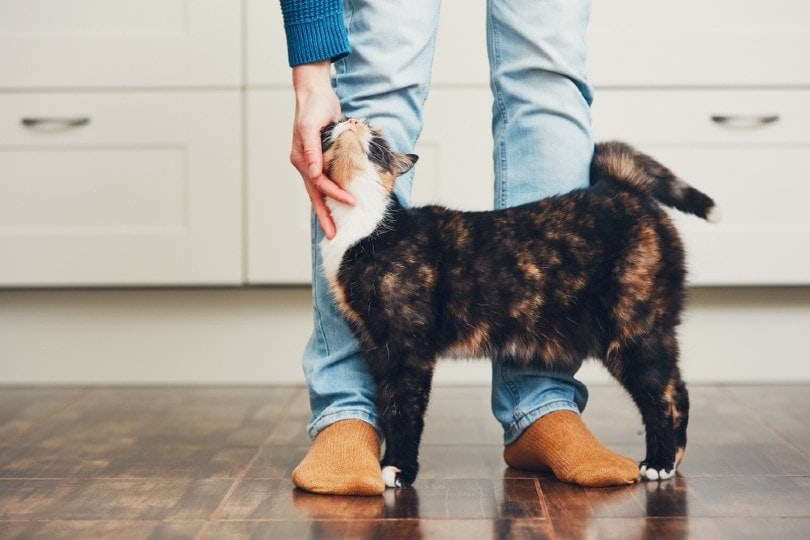
Happy
When your cat is happy, they will be relaxed and probably sleepy. Cats sleep most of the day and don’t intend to change that on account of our feelings. The tail may be held high and curved like a question mark or held loosely in a middle position along the back.
The big key to look for is that your cat looks relaxed. If your cat is fearful or angry, they will not be calm and curious.
Angry
If your cat is angry, they’ll drop the relaxed body language in favor of stiff, rigid movements. Their ears may flatten against their head or turn to the side, and their pupils will be dilated as they stare at whatever has provoked them to see how much potential danger they may be in.
In this case, direct eye contact is a threat, especially if your cat isn’t blinking. While blinking is a friendly gesture, intense staring is usually a sign of aggression in cats. If your cat is showing signs of frustration or anger, throw a pen or toy across the room for them to chase. That will help them get their energy out without attacking you.
Fear
If your cat is afraid, the signs may look similar to when your cat is angry. However, instead of the rigid, swift tail swishing, your cat will probably tuck their tail against their belly. They do this so they can appear small and stay unseen.
Your cat will probably stare intensely at you while frightened. But, instead of a threatening, aggressive posture, your cat will probably get low to the ground and show submissive body language or run away.
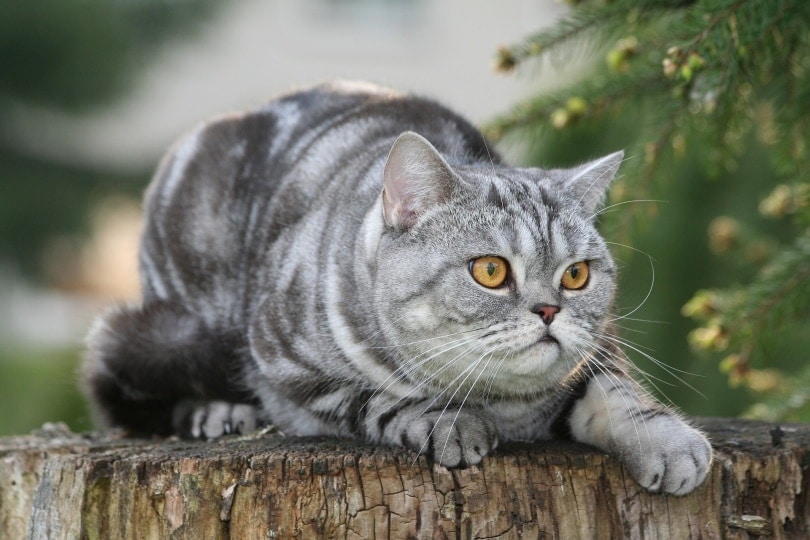
Final Thoughts
Your cat’s body language is essential and learning how to interpret it can improve your relationship with your cat. However, your cat’s communication isn’t black and white. For example, eye contact isn’t always a bad thing! Sometimes, eye contact can be an essential bonding experience for you and your cat.
While this is a general guide to cat behavior, you’ll have to adjust your expectations based on your cat. They have individual personalities just like humans, and what may be expected of some cats may be unusual for your cat! If you’re worried about your cat’s behavior, call your veterinarian. They can help guide you in making the best choices for your cat.
Featured Image Credit: Yuriy Seleznev, Shutterstock


